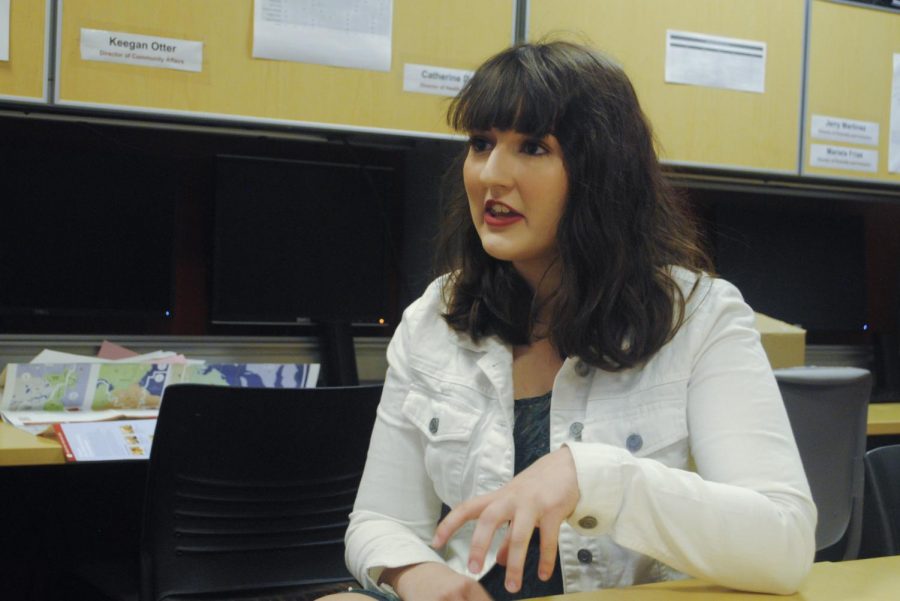State aims for changes on State Route 26 soon
Issues with drivers, student safety cause proposition for road funding to be sooner
ALYSSA STANFIELD | THE DAILY EVERGREEN
Kelly Marshall, ASWSU deputy director of legislative affairs, explains the importance of passing lanes for student safety Thursday at the CUB.
April 5, 2019
Plans for improvements on State Route 26 may move ahead as legislators continue to discuss the state’s budget.
Gavin Pielow, ASWSU director of legislative affairs, said the current plan is to include passing lanes on the two-lane highway, which is scheduled to start in 2025.
Kelly Marshall, ASWSU deputy director of legislative affairs, said there is $2,050 allocated for 2023-2025 and $9,100 allocated for 2025-2027.
She said Washington’s Senate Transportation Committee issued a recommended budget for State Route 26, which is to combine both allocated amounts and move it earlier to 2019-2021.
“A lot of [construction projects] are planned,” Pielow said. “Other projects have to be funded at a certain time frame depending on how immediate the need is and about when it was requested.”
Marshall said the budget to fund it in two allocations was not considered, but the budget proposal to fund it all at once was.
She said Chris Mulick, WSU’s director of state relations, has been helpful with the whole process to move the budget forward.
“If the new budget gets passed, the money would be moved to the 2019-2021 budget,” Marshall said. “We haven’t seen any pushback against it, so we are very optimistic.”
She said they would like to receive approval for construction soon, but the concern is determining when it is safest to start.
Pielow said Mayor Glenn Johnson is in favor of adding more lanes. State Route 26 is usually overcrowded during special occasions such as Week of Welcome, Dad’s Weekend and Thanksgiving break, he said.
“About two-thirds of the WSU student bodies are actually residents from [the] west side of the cascades,” he said.
Marshall said the route is not just a passing lane, but also includes climbing lanes, which are lanes going uphill. Climbing lanes are dangerous areas and a problem for students’ safety.
“Any student who drives those roads, or knows somebody who drives those roads, should care about this,” she said.
Peilow said there are cars that are trying to go fast on the same, narrow road, and tractors, agricultural vehicles and semi-trucks can prevent drivers from seeing ahead at times.
“Having the climbing lanes means we are not going to be those cars going into the opposing lane just to climb that car ahead,” he said. “The road can handle more vehicles.”
The article has been updated to correct Pielow’s statement about the current plan for State Route 26.

















